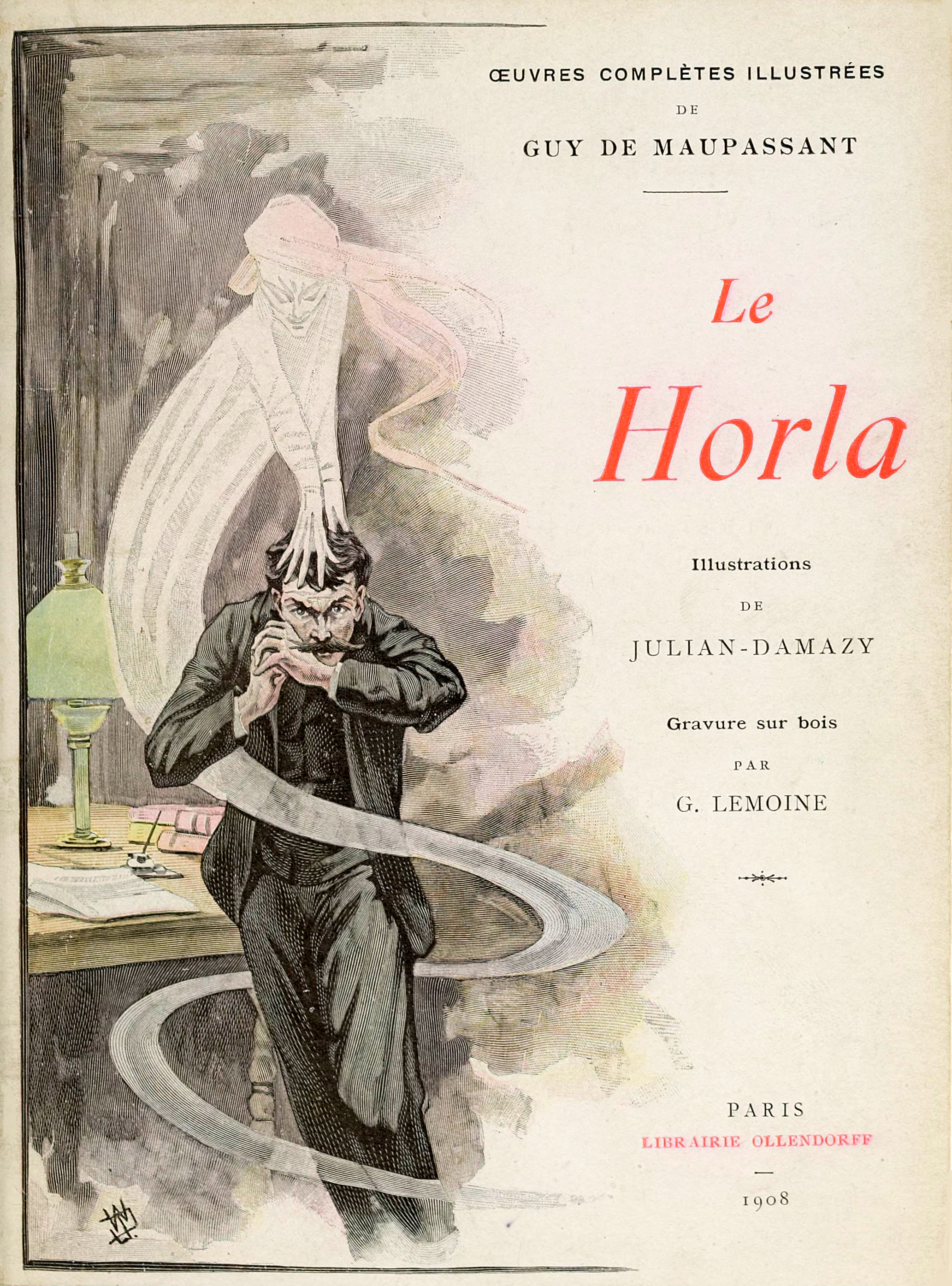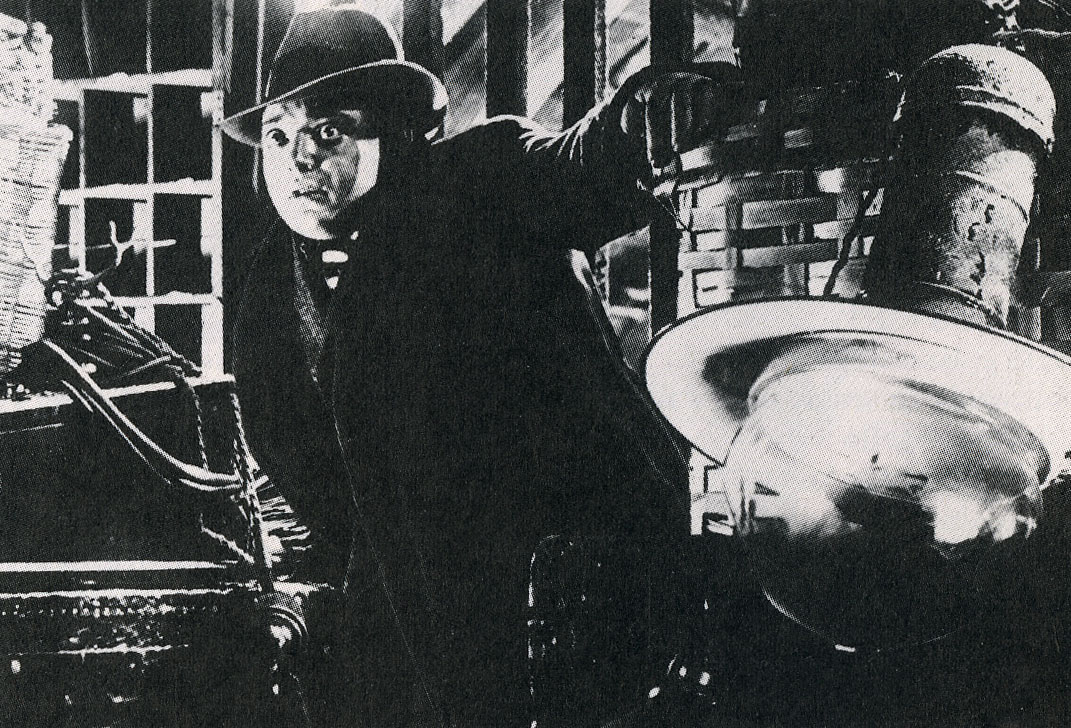|
Le Horla
"The Horla" (French: ''Le Horla'') is an 1887 short horror fiction, horror story written in the style of a journal by the French writer Guy de Maupassant, after an initial, much shorter version published in the newspaper ''Gil Blas (periodical), Gil Blas'', October 26, 1886. The story has been cited as an inspiration for Lovecraft's "The Call of Cthulhu", which also features an extraterrestrial life, extraterrestrial being who influences minds and who is destined to conquer humanity. The word ''horla'' itself is not French, and is a neologism. Charlotte Mandell, who has translated "The Horla" for publisher Melville House, suggests in an afterword that the word "horla" is a portmanteau of the French words ''hors'' ("outside"), and ''là'' ("there") and that "le horla" sounds like "the Outsider, the outer, the one Out There," and can be transliterally interpreted as "the 'what's out there'". Summary In the form of a journal, the narrator, an upper-class, unmarried, bourgeois ... [...More Info...] [...Related Items...] OR: [Wikipedia] [Google] [Baidu] |
Guy De Maupassant
Henri René Albert Guy de Maupassant (, ; ; 5 August 1850 – 6 July 1893) was a 19th-century French author, remembered as a master of the short story form, as well as a representative of the Naturalist school, who depicted human lives, destinies and social forces in disillusioned and often pessimistic terms. Maupassant was a protégé of Gustave Flaubert and his stories are characterized by economy of style and efficient, seemingly effortless ''dénouements''. Many are set during the Franco-Prussian War of the 1870s, describing the futility of war and the innocent civilians who, caught up in events beyond their control, are permanently changed by their experiences. He wrote 300 short stories, six novels, three travel books, and one volume of verse. His first published story, " Boule de Suif" ("The Dumpling", 1880), is often considered his most famous work. Biography Henri-René-Albert-Guy de Maupassant, born on 5 August 1850 at the late 16th-century Château de Miromes ... [...More Info...] [...Related Items...] OR: [Wikipedia] [Google] [Baidu] |
Extraterrestrial Life In Popular Culture
An extraterrestrial or alien is any extraterrestrial lifeform; a lifeform that did not originate on Earth. The word ''extraterrestrial'' means "outside Earth". The first published use of ''extraterrestrial'' as a noun occurred in 1956, during the Golden Age of Science Fiction. Extraterrestrials are a common theme in modern science-fiction, and also appeared in much earlier works such as the second-century parody ''True History'' by Lucian of Samosata. Gary Westfahl writes: History Pre-modern Cosmic pluralism, the assumption that there are many inhabited worlds beyond the human sphere predates modernity and the development of the heliocentric model and is common in mythologies worldwide. The 2nd century writer of satires, Lucian, in his ''True History'' claims to have visited the moon when his ship was sent up by a fountain, which was peopled and at war with the people of the Sun over colonisation of the Morning Star. Other worlds are depicted in such early works as the 10 ... [...More Info...] [...Related Items...] OR: [Wikipedia] [Google] [Baidu] |
The Weird Circle
''The Weird Circle'' was a syndicated radio drama series produced in New York and originally broadcast between 1943 and 1945. Production background The series was a Ziv Production, produced at RCA's New York studios and licensed by the Mutual Broadcasting System, and later, NBC's Red network. It lasted two seasons, 39 shows each (78 total) consisting mostly of radio adaptations of classic horror stories from the pens of the world's best known and respected supernatural fiction authors such as Edgar Allan Poe, Robert Louis Stevenson and Charles Dickens Charles John Huffam Dickens (; 7 February 1812 – 9 June 1870) was an English writer and social critic. He created some of the world's best-known fictional characters and is regarded by many as the greatest novelist of the Victorian e .... The production values were modest and it featured very little music.Weird Circle entry o''Radio Horror Hosts'' website Accessed July 4, 2013 Series opening/closing Standard op ... [...More Info...] [...Related Items...] OR: [Wikipedia] [Google] [Baidu] |
Taylor & Francis
Taylor & Francis Group is an international company originating in England that publishes books and academic journals. Its parts include Taylor & Francis, Routledge, F1000 (publisher), F1000 Research or Dovepress. It is a division of Informa, Informa plc, a United Kingdom–based publisher and conference company. Overview The company was founded in 1852 when William Francis (chemist), William Francis joined Richard Taylor (editor), Richard Taylor in his publishing business. Taylor had founded his company in 1798. Their subjects covered agriculture, chemistry, education, engineering, geography, law, mathematics, medicine, and social sciences. Francis's son, Richard Taunton Francis (1883–1930), was sole partner in the firm from 1917 to 1930. In 1965, Taylor & Francis launched Wykeham Publications and began book publishing. T&F acquired Hemisphere Publishing in 1988, and the company was renamed Taylor & Francis Group to reflect the growing number of Imprint (trade name), imp ... [...More Info...] [...Related Items...] OR: [Wikipedia] [Google] [Baidu] |
Peter Lorre
Peter Lorre (; born László Löwenstein, ; June 26, 1904 – March 23, 1964) was a Hungarian and American actor, first in Europe and later in the United States. He began his stage career in Vienna, in the Austro-Hungarian Empire, before moving to Germany where he worked first on the stage, then in film in Berlin in the late 1920s and early 1930s. Lorre caused an international sensation in the Weimar Republic-era film '' M'' (1931), directed by Fritz Lang, in which he portrayed a serial killer who preys on little girls. Of Jewish descent, Lorre left Germany after Adolf Hitler and the Nazi Party came to power. His second English-language film, following the multiple-language version of ''M'' (1931), was Alfred Hitchcock's '' The Man Who Knew Too Much'' (1934), made in the United Kingdom. Eventually settling in Hollywood, he later became a featured player in many Hollywood crime and mystery films. In his initial American films, '' Mad Love'' and ''Crime and Punishment'' (both 193 ... [...More Info...] [...Related Items...] OR: [Wikipedia] [Google] [Baidu] |
CBS Radio Mystery Theater
''CBS Radio Mystery Theater'' (a.k.a. ''Radio Mystery Theater'' and ''Mystery Theater'', sometimes abbreviated as ''CBSRMT'') is a radio drama series created by Himan Brown that was broadcast on CBS Radio Network affiliates from 1974 to 1982, and later in the early 2000s was repeated by the NPR satellite feed. The format was similar to that of classic old time radio shows like '' The Mysterious Traveler'' and ''The Whistler'', in that the episodes were introduced by host E. G. Marshall who provided pithy wisdom and commentary throughout. Unlike the hosts of those earlier programs, Marshall is fully mortal, merely someone whose heightened insight and erudition plunge the listener into the world of the macabre. As with Himan Brown's prior ''Inner Sanctum Mysteries'', each episode of ''CBS Radio Mystery Theater'' opened and closed with the ominous sound of a creaking door. This sound effect is accompanied by Marshall's greeting, "Come in!… Welcome. I'm E. G. Marshall." At each sh ... [...More Info...] [...Related Items...] OR: [Wikipedia] [Google] [Baidu] |
Jean-Daniel Pollet
Jean-Daniel Pollet (; 1936–2004) was a French film director and screenwriter who was most active in the 1960s and 1970s. He was associated with two approaches to filmmaking: comedies which blended burlesque and melancholic elements, and poetic films based on texts by writers such as the French poet Francis Ponge. Career Pollet was born on 20 June 1936 in La Madeleine, Nord, in France. His film career started in 1958, when he did a short film set in Paris called ''Pourvu qu'on ait l'ivresse''..., in which Pollet filmed the movements of dancers' silhouettes. Pollet built on the images and themes from this first film in many of his later works, by incorporating elements of popular comedies imbued with both burlesque and melancholic elements. In the early 1960s, Pollet began exploring another approach to filmmaking with the film ''Méditerranée (1963 film), Méditerranée'', which he made over two years with Volker Schlöndorff. Pollet tried to create a form of poetic film, using text ... [...More Info...] [...Related Items...] OR: [Wikipedia] [Google] [Baidu] |
Wolf In The Fold
"Wolf in the Fold" is the fourteenth episode of the second season of the American science fiction television series '' Star Trek''. Written by Robert Bloch and directed by Joseph Pevney, it was first broadcast on December 22, 1967. In the episode, a series of horrific murders of women, on a world where such things never happen, points to Mr. Scott as the prime suspect. Plot Captain Kirk, Chief Medical Officer Dr. McCoy, and Chief Engineer Montgomery Scott of the Federation starship USS ''Enterprise'' are enjoying therapeutic shore leave at a night club on planet Argelius II. Mr. Scott ("Scotty") is introduced to Kara, a dancer at the club, and leaves with her. As Kirk and McCoy make their way through an evening fog to another private club, they hear a scream, and find the dancer dead on the ground with Scotty standing against a nearby wall, clutching a bloody knife. Scott is detained and interrogated by Mr. Hengist, an administrator from Rigel IV and head of Argelius's po ... [...More Info...] [...Related Items...] OR: [Wikipedia] [Google] [Baidu] |
The Original Series
''Star Trek'' is an American science fiction television series created by Gene Roddenberry that follows the adventures of the starship and its crew. It later acquired the retronym of ''Star Trek: The Original Series'' (''TOS'') to distinguish the show within the media franchise that it began. The show is set in the Milky Way galaxy, circa 2266–2269. The ship and crew are led by Captain James T. Kirk (William Shatner), First Officer and Science Officer Spock (Leonard Nimoy), and Chief Medical Officer Leonard H. "Bones" McCoy (DeForest Kelley). Shatner's voice-over introduction during each episode's opening credits stated the starship's purpose: Space: the final frontier. These are the voyages of the starship ''Enterprise''. Its five-year mission: to explore strange new worlds, to seek out new life and new civilizations, to boldly go where no man has gone before. Norway Productions and Desilu Productions produced the series from September 1966 to December 1967. Paramount ... [...More Info...] [...Related Items...] OR: [Wikipedia] [Google] [Baidu] |



.jpg)

